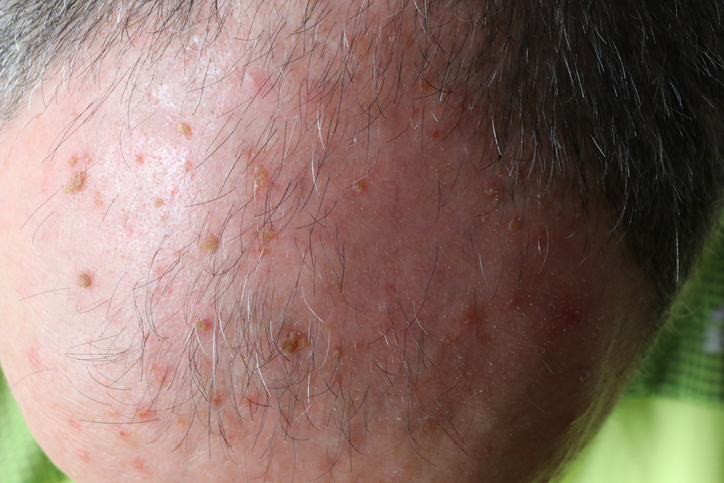Actinic Keratosis in Texas & Louisiana
At Sanova Dermatology, we pride ourselves on delivering top-tier skin care through a combination of experience, education, and advanced technology. Our team of highly experienced physicians are dedicated to providing treatment for Actinic Keratosis. We have convenient locations across Texas, including Houston, Pflugerville, Austin, Bee Cave, and Dripping Springs. We also serve Louisiana with locations in Metairie, Old Metairie, Uptown New Orleans and Baton Rouge.
Actinic Keratosis are scaly, red, elevated spots that generally occur on the sun exposed areas of the body such as the face, arms and hands. They are NOT malignant, but they can develop into skin cancers if left untreated.Actinic Keratosis are caused by sun exposure in a person who tends to be more sensitive to the adverse effects of the sun. They occur in patients who get too much sun over their lifetime, or in patients (such as redheads, other individuals with fair skin) who are very sensitive to the little sun they get.

Treatment
Cryotherapy/Liquid Nitrogen – freezing the affected areas with the application of Liquid Nitrogen is frequently used to treat individual lesions. After the Liquid Nitrogen is applied, a crust, scab or blister may form and the area should return to normal in 1-2 weeks. The treated area can be washed normally. It may be left open or covered with a Band-Aid if you would like for cosmetic reasons, but you don’t need to cover it. 5-fluorouracil – A topical chemotherapy cream can be used to treat numerous lesions or diffuse sun damaged skin. The cream is applied for a few weeks. The cream is absorbed by the sun damaged skin cells and kills them. This often causes unsightly redness and crusted lesions in the treated area during therapy. Once the therapy is stopped, the skin heals with significant cosmetic improvement. Imiquimod – This topical immune modulating cream activates the body’s immune system to attack and destroy sun damaged cells on the skin. It is typically employed for a few weeks. This cream also produces redness and crusted skin lesions during treatment which then heals with clear skin and significant cosmetic improvement. Learn more about Imiquimod. Photodynamic Therapy (PDT) – This light-based therapy uses a specific chemical which is placed on the affected skin and then exposed to light. The light activates the chemical and causes it to specifically destroy the sun damaged cells. Regardless of the treatment, should the scaling not go away or should it return, contact your dermatologist as additional treatment may be indicated.
Prevention
Sun damage is permanent. Once sun damage has progressed to the point where Actinic Keratosis develops, new keratoses may develop without sun exposure. However, patients with Actinic Keratosis should avoid further sun damage by using sunscreen with an SPF number greater than 30. This should be applied to all sun exposed areas such as the face, arms and hands on a regular basis. You need not avoid the sun, but use a sunscreen and keep yourself covered by sun protective clothing when outdoors.
Contact Sanova Dermatology
If you would like more information, or if you would like to schedule a consultation with one of our experienced dermatologists, please click here.
